ViT arxiv
Applied pure transformer directly to sequences of image patches.
- An image patch is a
- The patchify stem is implemented by a stride-
Influence
Performance scales with dataset size and becomes a new de facto for image backbone.
Representing Image as Patches
For an input image
Sample implementation:
from einops import rearrange
proj = nn.Linear((patch_size**2)*channels, dim)
x_p = rearrange(img, 'b c (h p) (w p) -> b (h w) (p p c)', p = patch_size)
embedding = proj(x_p)
or equivalently:
conv = nn.Conv2d(channels, dim, kernel_size=patch_size, stride=patch_size)
embedding = rearrange(conv(img), 'b c h w -> b (h w) c')
ViT vs ResNet arxiv
-
MHSAs and Convs exhibit opposite behaviors. MHSAs are low-pass filters, but Convs are high-pass filters.
-
MHSAs improve not only accuracy but also generalization by flattening the loss landscapes.
ViT vs ResNet
ViT models are less effective in capturing the high-frequency components (related to local structures) of images than CNN models [1].
For ViTs to capture high-frequency components:
ViT vs ResNet
Robustness to input perturbations:
-
ResNet: noise has a high frequency component and localized structure [1]
-
ViT: relatively low frequency component and a large structure (The border is clearly visible in the
- When pre-trained with a sufficient amount of data, ViT are at least as robust as the ResNet counterparts on a broad range of perturbations [2].
ViT vs ResNet arxiv
Is dicision based on texture or shape?
- ResNet: relies on texture rather than shape [1]
- ViT: little more robust to texture perturbation
- Human: much robust to texture perturbation
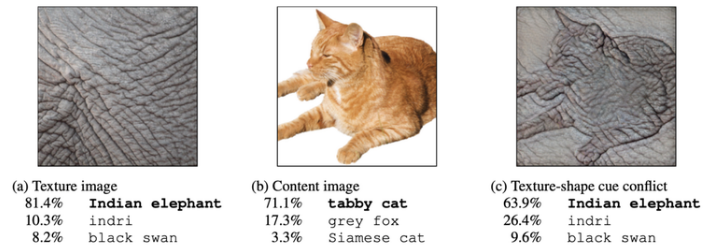
Do We Really Need Attention? arxiv
It turns out that it is not "Attention is All You Need".
- As long as the tokens can be mixed, MetaFormer architecture can achieve the similar performance as the Transformer.
- Meta architecture of transformer layer can be viewed as a special case of ResNet layer with following componets:
- Token mixers (self-attention, etc.)
- Position Encoding
- Channel MLP (1x1 convolution)
- Normalization (LayerNorm, etc.)
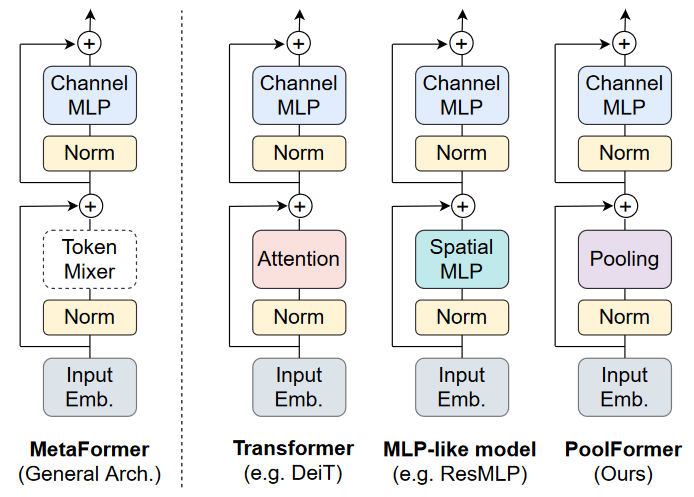
CLIP arxiv github
Learning directly from raw text about images leverages a broader source of supervision compared to using a fixed set of predetermined object categories. CLIP introduced a simple yet effective contrastive objective to learn a vision-language embedding space, where similar concepts are pulled together and different concepts are pushed apart.
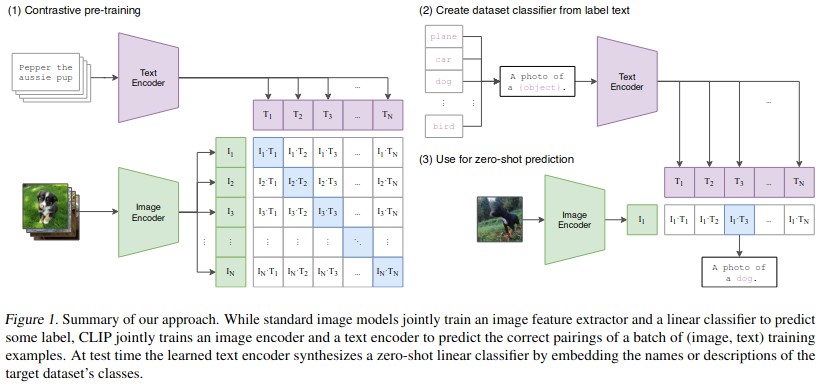
CLIP arxiv github
Sample implementation:
# extract feature representations of each modality
I_f = image_encoder(I) #[n, d_i]
T_f = text_encoder(T) #[n, d_t]
# joint multimodal embedding [n, d_e]
I_e = l2_normalize(np.dot(I_f, W_i), axis=1)
T_e = l2_normalize(np.dot(T_f, W_t), axis=1)
# scaled pairwise cosine similarities [n, n]
logits = np.dot(I_e, T_e.T) * np.exp(t)
# symmetric loss function
labels = np.arange(n)
loss_i = cross_entropy_loss(logits, labels, axis=0)
loss_t = cross_entropy_loss(logits, labels, axis=1)
loss = (loss_i + loss_t)/2
Object Detection
YOLO
DETR
Segmentation
LSeg arxiv github
The text embeddings provide a flexible label representation and help generalize to previously unseen categories at test time, without retraining or even requiring a single additional training sample.
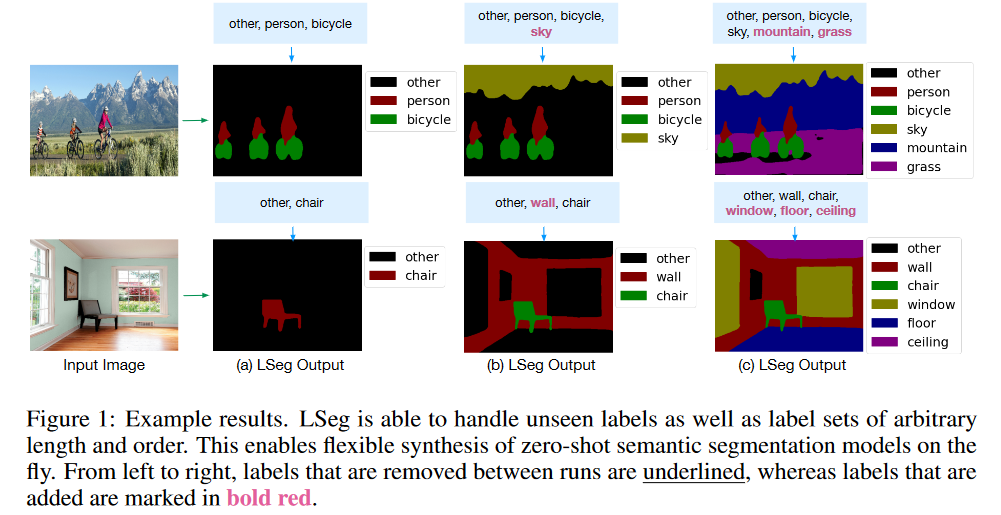
LSeg arxiv github
Language-driven Semantic Segmentation (LSeg) embeds text labels and image pixels into a common space, and assigns the closest label to each pixel.
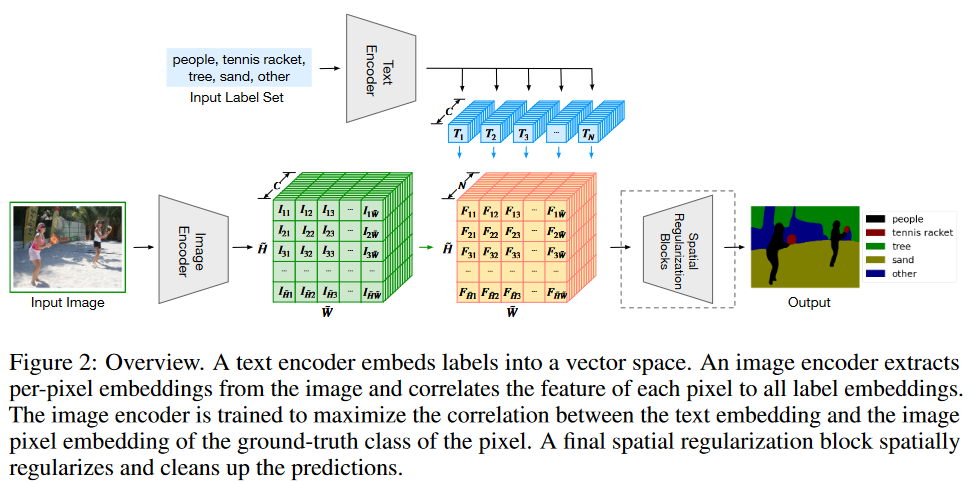
SAM arxiv
